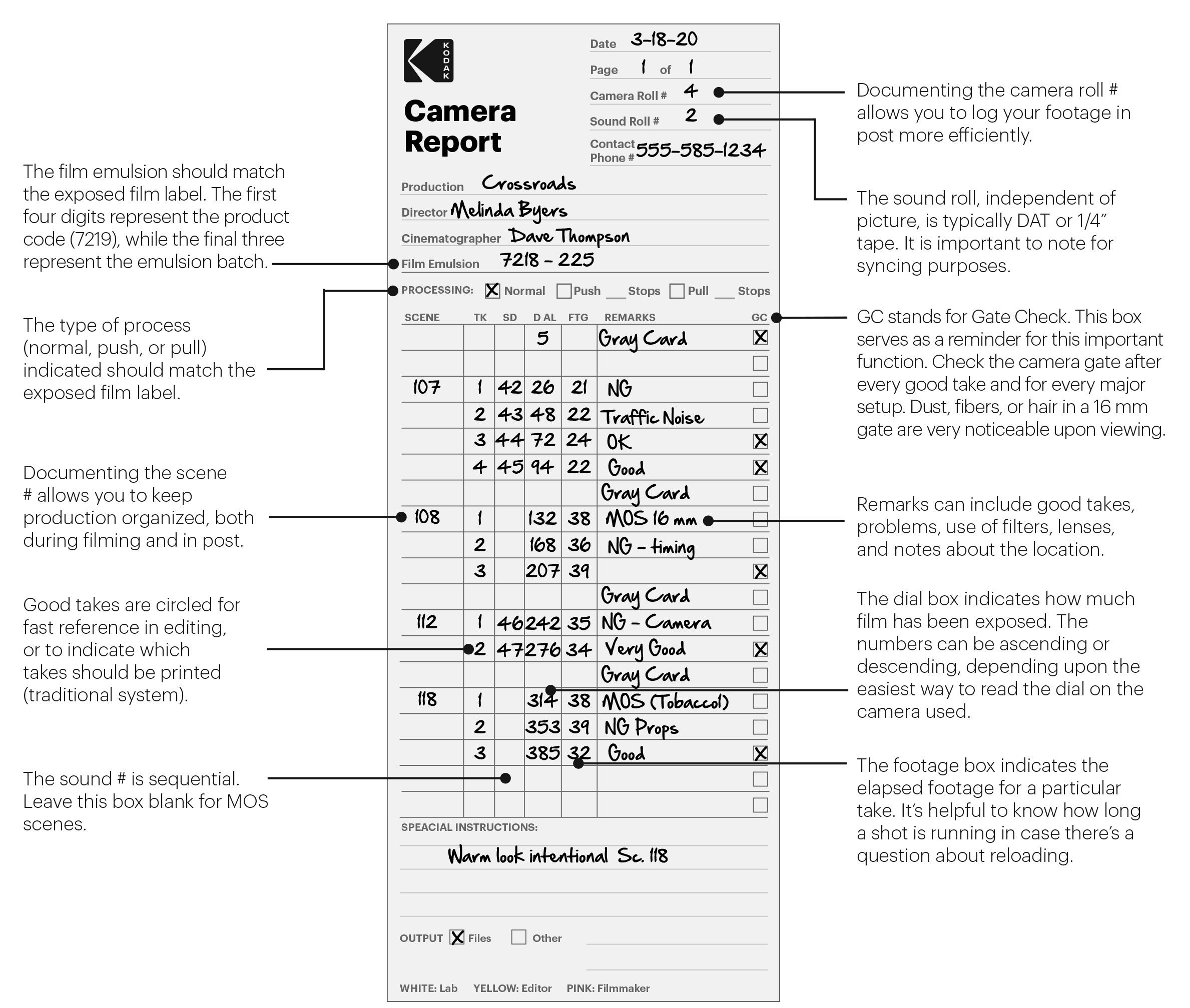Records are Made to be Kept
Completing a camera report is standard protocol in professional cinematography. It provides a concise record of all your camera activity: rolls, takes, filters, scene numbers, and other data recorded during production. Getting into the habit of completing this report will benefit you when you begin to work professionally.
The value of a properly completed camera report becomes evident when it's time to view and edit your footage. Without this report, post can be a frustrating and inefficient process. If you are shooting multiple takes on every setup, you will want to be able to quickly access information about each take. Without a camera report, you will have to search manually for the best take, or for the only take without a sound problem.
Camera reports are also an important tool for processing labs. Often, these reports include instructions to lab personnel about processing, prepping for telecine, and printing. If there is any question about a particular camera roll, the lab will be able to contact you and confirm if-for example-Camera Roll 3 is push-processed one stop.
This information will be on the exposed film label on the film can as well, but it doesn't hurt to have redundant information if it helps to keep things straight. When production runs late or becomes trying, it's easy to make mistakes. If you're in the habit of completing camera reports properly, you'll have a better chance of being able to recover quickly from mistakes.
